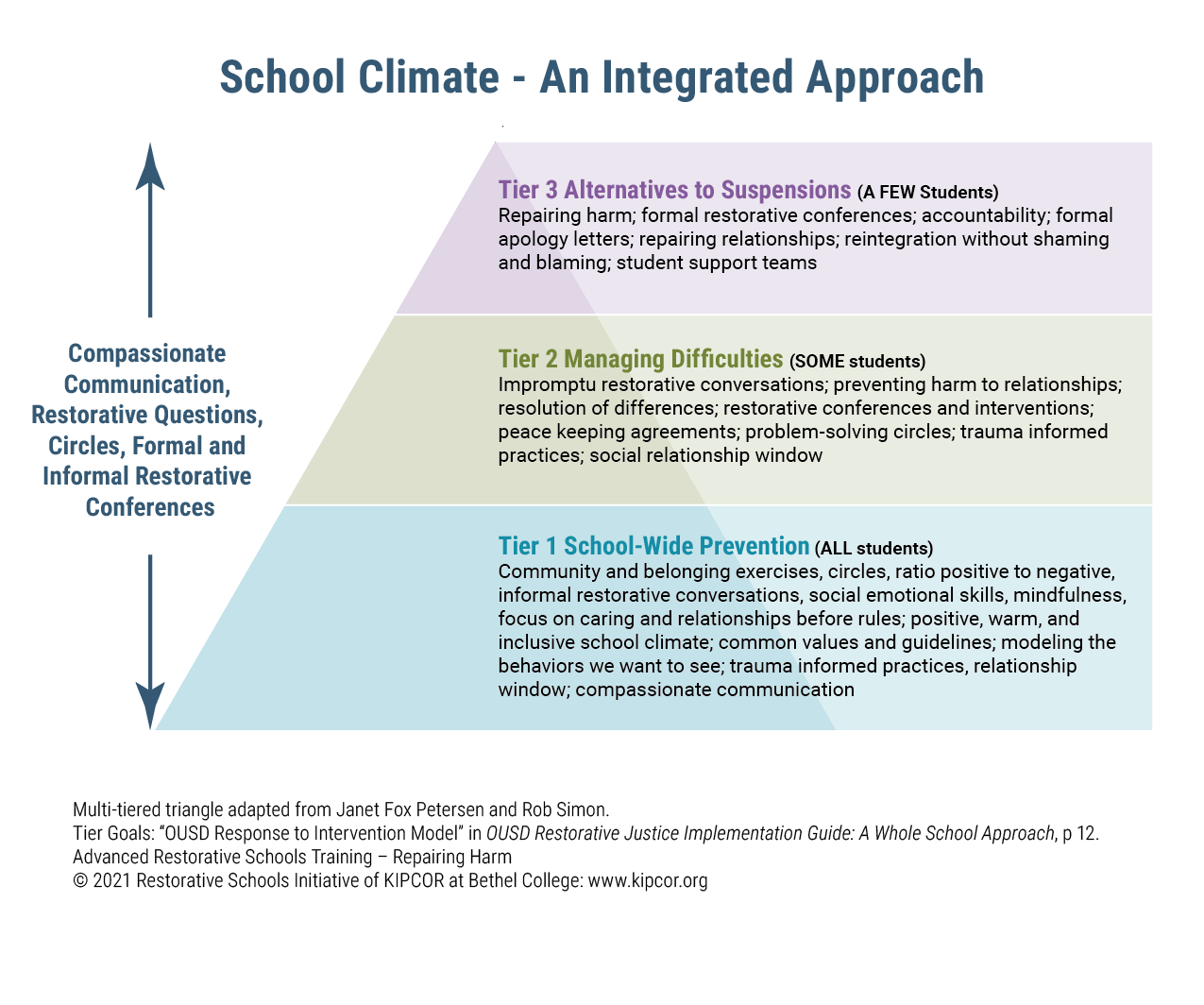Perhaps you wish to develop restorative justice as your organization’s primary response to internal harms and injustices.
This would aim to create a new default protocol that better aligns with your shared values.
Examples Can Include
-
Investigating and repairing historical harms such as participation in slave-trading or segregation.
-
Creating mechanisms for responding to harm and conflict in a healing way.
-
Adopting inclusive and participatory decision-making processes rooted in consensus.
In Faith Institutions
Schools have long been implementing supportive systems to improve and maintain a positive climate for all members of the community. These learnings and approaches are transferable to other institutions such as parishes, dioceses, and non-profit organizations.
The model below demonstrates how restorative practices complement one another when integrated.
Many schools choose to implement a multi-tiered system of supports, including school-wide positive behavioral intervention supports or comprehensive, integrated, three-tiered model of prevention.
Each of these models understands that the primary area of work, or “Tier 1,” to support a positive school climate – used for everyone in the school – is practices designed to prevent harm and build relationships.
A secondary level, or “Tier 2,” recognizes that specialized processes for those who experience harm or conflict are helpful to build and maintain a positive school culture.
The third level, or “Tier 3,” recognizes that there need to be specialized systems in place to support individuals with high needs.
These models also recognize that these systems are integrated across academic, behavioral, and social needs in the school community.
The following image shows restorative approaches as applied throughout the different tiers of a multi-tiered system model:
Tier Goals
Tier 1: Build Relationships
Immerse the whole school in restorative community building to create a caring culture where every member can thrive.
Tier 2: Respond to Conflict and Harm
Provide restorative practices to heal harm, resolve conflicts, and create learning opportunities.
Tier 3: Provide Individualized Support
Welcome, integrate, and support youth in joining the school community after a sustained absence, or if they need an individualized circle of support.
Content contributors to this section included Sheryl Wilson.
Podcast
Dr. David Karp & Christian Santa Maria — Creating a Restorative Campus (Encounters with Dignity)


